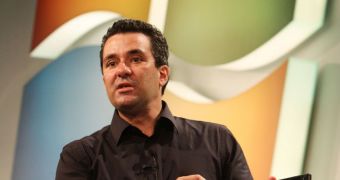Windows 8 devices will provide user experiences that are natural extensions of next-generation form factors, or at least this is the promise from Microsoft. The software giant also showed off Windows 8 at Computex in Taipei, Taiwan this week, in addition to the D9 conference demo by Julie Larson-Green, corporate vice president, Windows Experience, and Steven Sinofsky, president, Windows and Windows Live Division.
Mike Angiulo, corporate vice president of Windows Planning, Hardware and PC Ecosystem, was at Computex and took the stage to demo Windows 8 to hardware partners.
According to the Redmond company, the Windows 8 demonstration was designed to enable hardware partners to build devices tailored specifically to the next-generation Windows client, and the new user experiences it’s ushering in.
“Our aim with ‘Windows 8’ is to make the user experience a natural extension of the device, from the time you turn on your PC through how you interact with the applications you know and love,” Angiulo revealed.
“This represents a fundamental shift in Windows design that we haven’t attempted since the days of Windows 95, presenting huge opportunities for our hardware partners to innovate with new PC designs.”
As was the case with the D9 demo, Angiulo’s showcase also focused on the optimizations introduced to Windows 8 as part of the evolution designed to embrace newer touch-centric hardware, including slates or Tablet PCs.
As previously reported, Windows 8 will play nice with both x86 and ARM-based architectures, with Microsoft already hard at work with a range of silicon chip makers such as AMD, Intel, NVIDIA, Qualcomm, ARM, and Texas Instruments.
It’s important to note that x86 architectures cover both traditional 32-bit and 64-bit CPUs, but it should be implied that the next version of Windows will work with the same range of processors that Windows 7 supports today.

 14 DAY TRIAL //
14 DAY TRIAL //